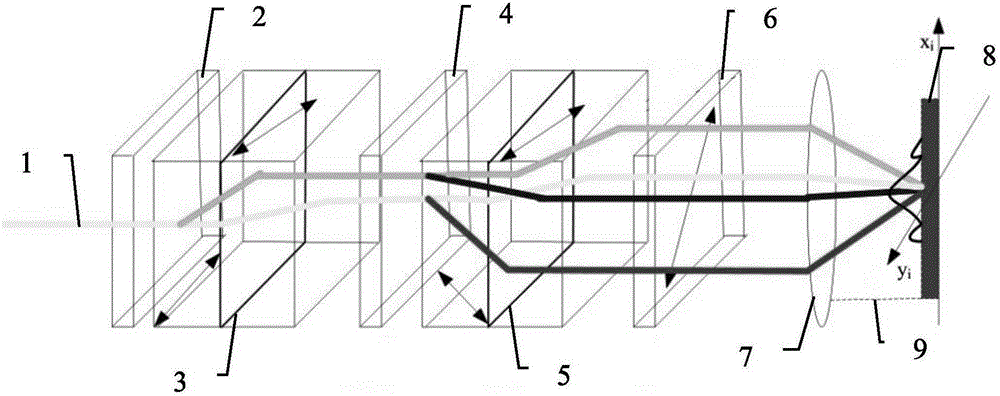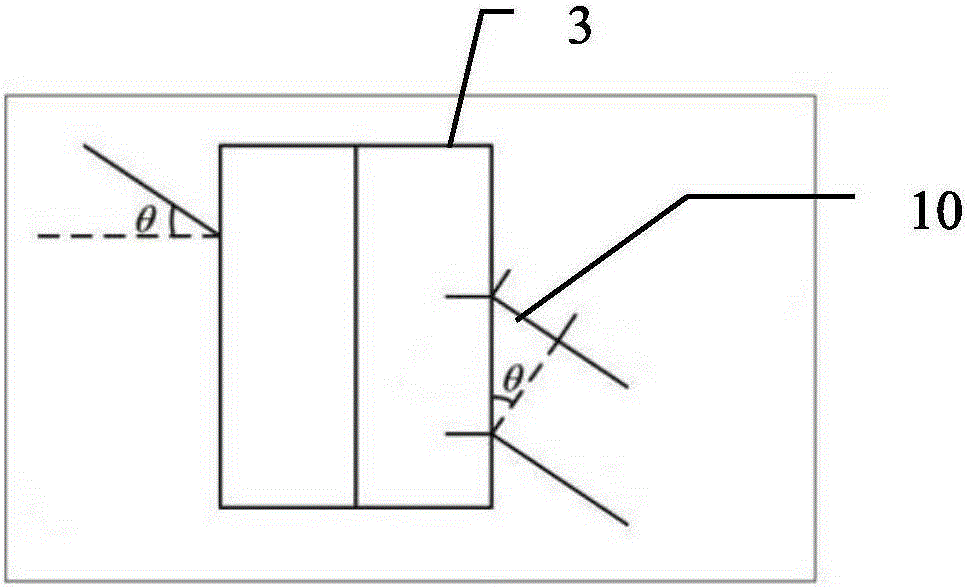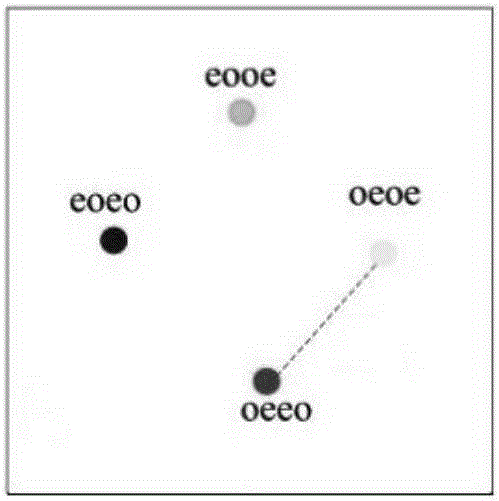Bi-mode full polarization imaging polarization measurement method
A full-polarization, dual-mode technology, applied in the field of dual-mode full-polarization imaging deviation measurement, can solve the problems of low signal-to-noise ratio, low spatial resolution, subsequent utilization of unfavorable polarization information, etc., to improve spatial resolution and eliminate crosstalk Effect
- Summary
- Abstract
- Description
- Claims
- Application Information
AI Technical Summary
Problems solved by technology
Method used
Image
Examples
Embodiment 1
[0048] Select snapshot mode for dynamic targets, a beam of input light emitted by the light source passes through the filter filter placed coaxially along the propagation direction of the incident light, the first improved Sava polarizer MSP1, the half-wave plate HWP, and the second improved The Sava polarizer MSP2 and the analyzer Analyzer are converted into four beams of parallel linearly polarized light eooe, eoeo, oeeo and oeoe, and the four beams of parallel linearly polarized light pass through the coaxial lens Lens and are imaged on the charge-coupled On the CCD element, the first interferogram of the incident light is obtained, and the S of the incident light is obtained after demodulation 0~3 image, where S 1 , S 2 and S 3 The modulation coefficients are equal; wherein, the polarization direction angle of the analyzer is 22.5°, the polarization direction angle of the half-wave plate is 22.5°, θ is the incident angle, and 10 is the optical path difference OPD.
Embodiment 2
[0050] Select both snapshot mode and time-sharing mode for static targets.
[0051] Snapshot mode: a beam of input light emitted by the light source passes through the filter filter, the first improved Sava polarizer MSP1, the half-wave plate HWP, and the second improved Sava polarizer placed coaxially along the propagation direction of the incident light. The mirror MSP2 and the analyzer Analyzer are converted into four parallel beams of linearly polarized light eooe, eoeo, oeeo and oeoe, and the four beams of parallel linearly polarized light are imaged on the charge-coupled device CCD after passing through the coaxially arranged lens Lens, Obtain the first interferogram of the incident light, and obtain the S of the incident light after demodulation 0~3 image, at this time S 1 , S 2 and S 3 The modulation coefficients are equal, wherein, the polarization direction angle of the analyzer is 22.5°, the polarization direction angle of the half-wave plate is 22.5°, θ is the i...
Embodiment 3
[0054] Select both snapshot mode and time-sharing mode for static targets.
[0055] Snapshot mode: a beam of input light emitted by the light source passes through the filter filter, the first improved Sava polarizer MSP1, the half-wave plate HWP, and the second improved Sava polarizer placed coaxially along the propagation direction of the incident light. The mirror MSP2 and the analyzer Analyzer are converted into four parallel beams of linearly polarized light eooe, eoeo, oeeo and oeoe, and the four beams of parallel linearly polarized light are imaged on the charge-coupled device CCD after passing through the coaxially arranged lens Lens, Obtain the first interferogram of the incident light, and obtain the S of the incident light after demodulation 0~3 image, at this time S 1 , S 2 and S 3 The modulation coefficients are equal, wherein, the polarization direction angle of the analyzer is 22.5°, the polarization direction angle of the half-wave plate is 22.5°, θ is the i...
PUM
 Login to View More
Login to View More Abstract
Description
Claims
Application Information
 Login to View More
Login to View More - R&D
- Intellectual Property
- Life Sciences
- Materials
- Tech Scout
- Unparalleled Data Quality
- Higher Quality Content
- 60% Fewer Hallucinations
Browse by: Latest US Patents, China's latest patents, Technical Efficacy Thesaurus, Application Domain, Technology Topic, Popular Technical Reports.
© 2025 PatSnap. All rights reserved.Legal|Privacy policy|Modern Slavery Act Transparency Statement|Sitemap|About US| Contact US: help@patsnap.com



